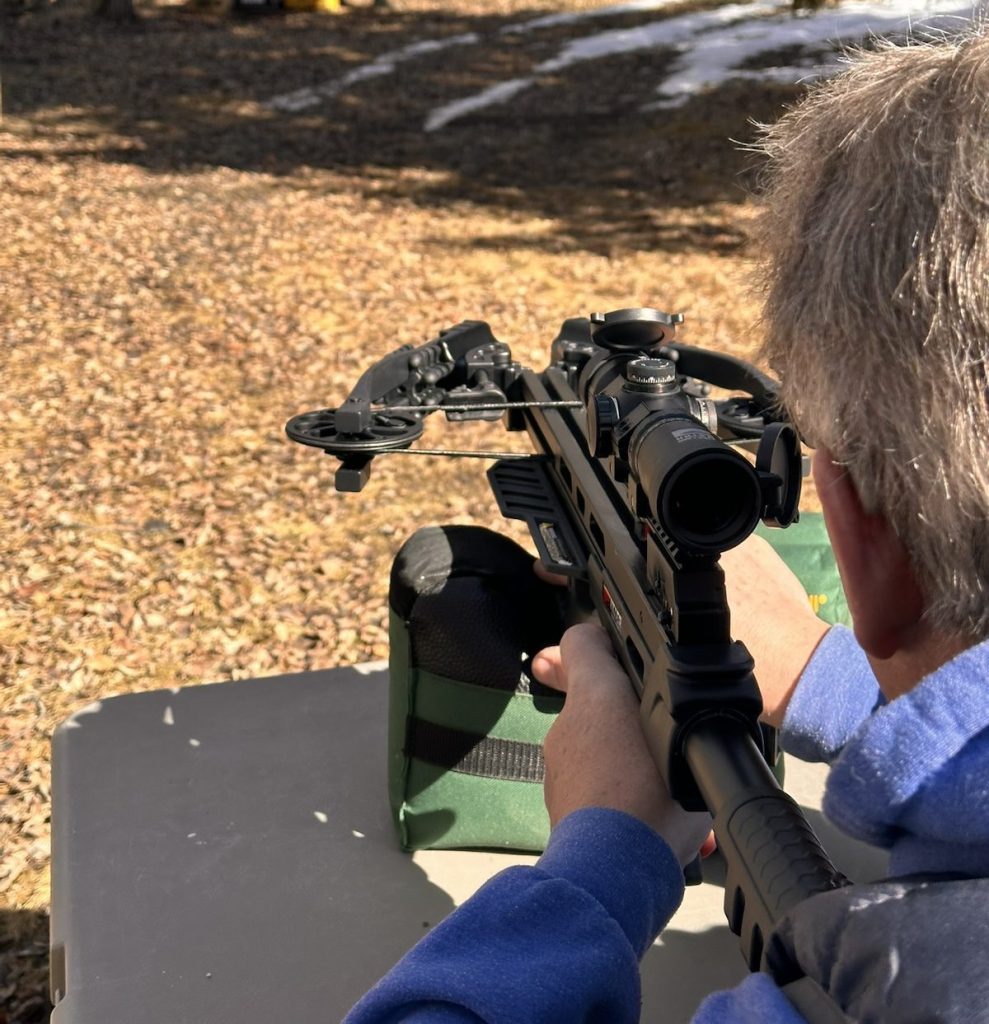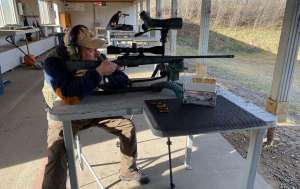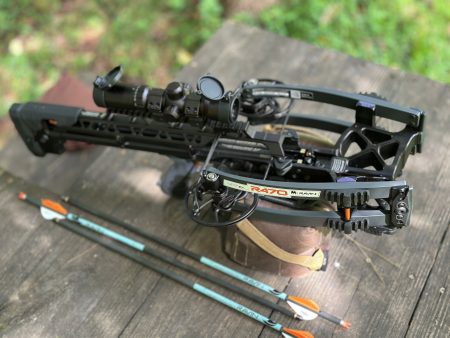When most people think of recoil, they picture the shoulder-jarring kick of a high-powered rifle. Crossbows, by contrast, are often seen as tame in comparison, almost recoil-free. But is that true?
The idea that crossbows have no recoil is a common misconception. While they don’t deliver the same explosive jolt as a firearm, crossbows still produce noticeable movement after the trigger is pulled. For hunters and target shooters alike, understanding this recoil, however subtle, is key to improving shot placement, maintaining scope accuracy, and selecting the right gear.
In this article, we’ll dive into the physics of crossbow recoil, compare it to firearm recoil, and explain how design, form, and accessories can influence what you feel after every shot. Whether you’re a seasoned hunter or new to the world of crossbows, getting a grip on recoil will give you the edge in the field and on the range.
What Is Recoil and What Causes It?
Recoil is the reactive force that occurs when energy is released in the opposite direction of a projectile’s movement. In firearms, recoil is generated when gunpowder ignites and propels a bullet forward, pushing the gun backward with an equal and opposite force, thanks to Newton’s Third Law of Motion.
In archery and crossbow shooting, the concept is similar, though the mechanics differ. Instead of an explosion, a crossbow stores mechanical energy in the limbs when cocked. When the trigger is pulled, that stored energy is rapidly transferred to the bolt, propelling it forward. But energy doesn’t vanish; it must be dispersed. The resulting reaction is a backward movement of the crossbow itself, felt as recoil.
Energy Transfer and Bolt Velocity
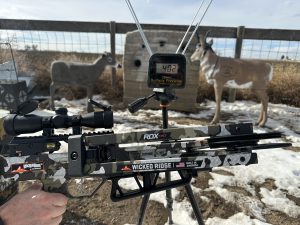
The force of recoil in a crossbow is directly related to how much energy is stored and released during the shot. Higher draw weights and faster bolt speeds mean more energy is being transferred, and more movement is pushed back into the shooter’s hands and shoulder.
For example, a high-performance crossbow shooting a 400-grain bolt at 400 feet per second can generate upwards of 130 foot-pounds of kinetic energy. Not all of that translates into recoil, but enough does to produce noticeable movement—the faster and heavier the bolt, the more dramatic the energy exchange.
In short, recoil in a crossbow comes from the sudden release of mechanical energy and the motion required to hurl a bolt downrange. While not as violent as a firearm, it’s still a measurable and essential force.
Do Crossbows Really Have Recoil?
The short answer is yes, crossbows do have recoil, just not in the way many shooters expect. The recoil produced by a crossbow is the result of mechanical energy being rapidly released when the string is loosed and the limbs return to their resting state. While it lacks the explosive punch of gunpowder, the resulting movement can still be felt in the shooter’s hands and shoulders.
Mechanical Energy and Movement
When a crossbow is cocked, it stores energy in its limbs—pulling the trigger releases that energy almost instantly, transferring it into the bolt. However, just like with firearms, there is a reactive force. The bow pushes back against the shooter with a combination of rearward movement, vibration, and sometimes a sharp “jump” depending on the power and design of the bow.
Unlike a rifle’s straight-line recoil, crossbow recoil is more distributed, often involving a combination of vibration, vertical movement, and rearward push. That’s because the energy is not only moving straight back but also radiating through the limbs and stock.
How Different Crossbow Designs Influence Felt Recoil
Not all crossbows produce the same level or type of recoil. Factors that affect recoil include:
-
Limb Design: Reverse-draw crossbows typically have a more balanced design and reduced felt recoil compared to forward-draw models.
-
Weight Distribution: Heavier crossbows tend to absorb more of the recoil, resulting in less movement.
-
Draw Weight and Power Stroke: More power usually means more recoil. High draw weights and long power strokes deliver more energy, which in turn increases what the shooter feels.
-
String Stop Systems and Dampeners: Built-in vibration-reducing features can significantly reduce perceived recoil.
So while recoil in crossbows may not be dramatic, it’s very real, and the amount you feel depends mainly on the engineering of your setup.
Crossbow Recoil vs. Rifle Recoil
While both rifles and crossbows generate recoil through the release of stored energy, the intensity and type of recoil are vastly different. Understanding how crossbow recoil compares to that of a firearm can help shooters choose equipment more confidently and prepare for the field.
Force Comparison (Foot-Pounds)
Let’s talk numbers. A typical hunting rifle—say, a .308 Winchester—generates around 15 to 20 foot-pounds of recoil energy. A high-powered magnum rifle can exceed 30 foot-pounds. That recoil is delivered in a sharp, instantaneous pulse when the cartridge ignites.
By contrast, a powerful modern crossbow might produce 2 to 4 foot-pounds of recoil energy. It’s not an apples-to-apples comparison due to the differences in mechanisms, but the overall kinetic “kick” of a crossbow is far milder. Much of the crossbow’s energy is absorbed by the limbs and dissipated over a slightly more extended period, making it feel more like a vibration or small jump than a punch.
Felt Experience and Noise
Where a rifle’s recoil can be loud, concussive, and physically jarring, crossbow recoil is more subtle. Shooters often describe it as a thump or a jerk forward followed by a residual vibration. Still, that vibration can affect follow-through and accuracy, especially when shooting offhand.
Noise is also a byproduct of recoil. Rifles produce an audible report from the combustion of powder. Crossbows, while much quieter, can still “clack” loudly due to string slap or limb vibration—an issue many hunters address with limb dampeners and string stops.
In practical terms, a crossbow’s recoil won’t bruise your shoulder or knock your sights off zero like a heavy rifle might—but it’s enough to move your shot if you’re not prepared for it.
How to Reduce Recoil on a Crossbow
While crossbow recoil is significantly less than that of a firearm, it can still affect your shooting comfort, accuracy, and long-term performance, especially during extended sessions or in high-powered setups. The good news? There are several ways to minimize its effects.
Proper Form and Grip
Just like with any shooting platform, proper body mechanics are the foundation of recoil management.
-
Shoulder Placement: Ensure the buttstock is firmly but comfortably seated into your shoulder. A loose mount can amplify recoil movement.
-
Firm Grip: Maintain a solid, steady grip with your trigger hand and support hand. Don’t choke the grip, but don’t let the bow “float,” either.
-
Follow-Through: Stay in position after the shot. Jerking away or flinching prematurely can compound any recoil you feel—and send your bolt off course.
These fundamentals go a long way toward absorbing and managing the crossbow’s reactive motion.
Accessories That Help
If you want to go a step further, several aftermarket accessories can help reduce recoil and vibration:
-
Limb Dampeners: Silicone or rubber dampeners mounted to the limbs reduce vibration and noise during the shot.
-
String Stops: These devices halt the forward motion of the string, reducing string oscillation and hand shock.
-
Buttstock Pads: Padded buttstocks or recoil pads help cushion what little kick does reach your shoulder.
-
Stabilizers: Found more commonly on compound bows, some crossbows also support stabilizers that balance the bow and absorb shock.
-
Weight Distribution Add-ons: Weighted foregrips or rails can shift the center of gravity forward, reducing muzzle jump and stabilizing the shot.
Even subtle upgrades can make a noticeable difference in recoil feel, especially on powerful models with higher draw weights.
Does Recoil Affect Scope Accuracy or Durability?
Recoil may be lighter with crossbows, but it still plays a role in scope performance, especially when you’re shooting high-powered models that generate significant kinetic energy. Over time, even minor recoil and vibration can affect your scope’s zero or internal components if it’s not designed to handle the shock.
Mounting Tips
Proper installation is critical to ensuring your optic stays locked in and damage-free:
-
Use Quality Rings and Bases: Cheap or poorly machined mounts can shift or loosen under repeated shots.
-
Tighten to Spec: Always follow manufacturer torque recommendations. Over-tightening can damage your scope tube, while under-tightening leads to movement.
-
Loctite is Your Friend: Blue threadlocker on mounting screws helps prevent slippage over time, especially in high-vibration setups.
A secure mount is your first line of defense against recoil-induced accuracy issues.
Choosing Scopes Rated for High Kinetic Energy
Not all scopes are created equal. Many traditional rifle scopes aren’t designed to handle the multidirectional vibration and short, intense recoil cycle of a crossbow. Look for:
-
Scopes Rated for Crossbows: These are engineered with reinforced internals to withstand the unique recoil profile of a crossbow.
-
Etched Reticles: More durable than wire reticles and less prone to shifting.
-
Shockproof Construction: Sealed and reinforced to resist jarring impacts.
When in doubt, opt for optics from brands that explicitly build and market models for crossbows. Investing in the right scope not only protects your zero but also boosts long-term confidence in every shot.
So Which Crossbows Have the Least Recoil?
Reverse-Draw Crossbows (Lowest Recoil Category)
Reverse-draw technology shifts the weight and string travel toward the center of the crossbow, reducing forward jump and vibration.
Top Low-Recoil Picks:
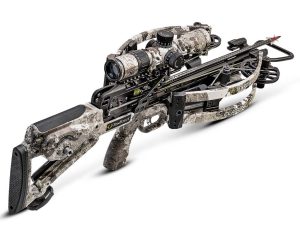
-
-
Reverse-draw, ACUslide system, built-in string stops and dampeners
-
Extremely balanced, very little felt recoil
-
-
Ravin R29X or R26X
-
Compact, reverse-draw, frictionless flight system reduces vibration
-
Exceptionally smooth shot cycle
-
-
-
Precision cam system, great balance, and low vibration
-
Heavier frame absorbs shock
-
Heavier, Well-Balanced Forward-Draw Crossbows
Weight helps dampen recoil. If you’re open to slightly bulkier builds, these forward-draw bows do a solid job:
-
-
Recurve limbs create less mechanical movement; very stable
-
No cams = fewer parts to vibrate
-
-
Wicked Ridge Raider 400 De-Cock
-
Budget-friendly, forward-draw, but includes string stops and a heavier frame
-
Less jump than many entry-level crossbows
-
| Crossbow Model | Draw Type | Weight (lbs) | Recoil Dampening Features | Felt Recoil Rating (1=Low, 5=High) |
|---|---|---|---|---|
| TenPoint Flatline 460 | Reverse-Draw | 7.5 | ACUslide, string stops, limb dampeners | 1 |
| Ravin R29X | Reverse-Draw | 6.75 | Frictionless flight system, compact design | 1 |
| Ravin R26X | Reverse-Draw | 6.5 | Frictionless flight system, vibration dampening | 1 |
| Mission Sub-1 XR | Forward-Draw | 7.6 | Heavier build, optimized cam system | 2 |
| Excalibur TwinStrike TAC2 | Recurve | 7.9 | No cams, recurve limbs, heavy frame | 2 |
| Wicked Ridge Raider 400 De-Cock | Forward-Draw | 6.5 | String stops, heavier forward draw | 3 |
Final Thoughts: Why Recoil Still Matters to Crossbow Hunters
Crossbows may not kick like a centerfire rifle, but recoil is still part of the shooting equation. From slight vibrations to subtle backward movement, every crossbow delivers some level of reactive force when a bolt is released. Understanding how recoil works—and how to manage it—can improve your shooting accuracy, preserve your scope, and reduce fatigue over time.
For hunters in particular, consistency and confidence are everything. A crossbow that recoils harshly or unpredictably can shake your focus or throw off a critical shot. But with the right design, proper form, and a few bright accessories, you can tame recoil and stay locked in on your target.
Whether you’re dialing in a new optic, choosing between reverse-draw and forward-draw models, or just fine-tuning your form, don’t overlook the physics behind every shot. Because when it comes to clean kills and tight groups, even the most minor jolt matters.
Per our affiliate disclosure, we may earn revenue from the products available on this page. To learn more about how we test gear, click here.

